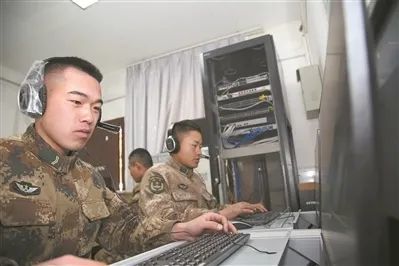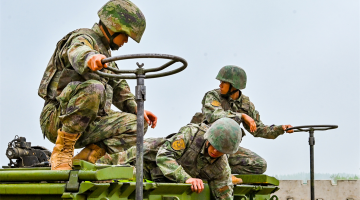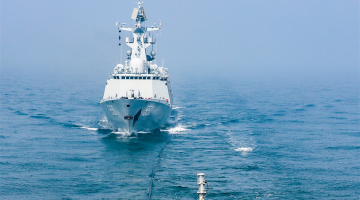
BEIJING, Feb.19 -- The Kunmujia sentry post is located at the westernmost end of the Tibet Military Command. When the morning whistle sounds, Sergeant Wang Sicheng got up and put away his electric blanket.
The electric blanket was used for emergency heating only when the temperature was below -20℃ in the past. But now, it has become a daily necessity at the sentry post. Other electric appliances, such as the humidifier, shoe dryer, radiator, and water heater, have also helped keep the service members warm and comfortable.
“Far-away as it is, the Kunmujia sentry post is now covered by the national power grid. Our living conditions have been greatly improved thereafter,” said Sgt. Wang Sicheng.
First built in 1960, the Kunmujia sentry post is close to Ali, over a thousand kilometers away from Lhasa, known as the foremost outpost in the southwest China. Sitting at an elevation of 4,960m in the middle of the no-man zone, the sentry post features an annual average temperature of 5℃, -37℃ at lowest, and a 5-month-long snowing period when there is no access in or out.
Since the post was built, the troops here first used butter lamp, then diesel generator, PV power generation, until now they had access to the national power grid.
Over the years, the military has never stopped efforts to ensure sufficient electricity in the remote and harsh regions of Tibet. In last December, the interconnection project between Ali and central Tibet power grid was officially put into operation, and the Kunmujia sentry post was synchronized into the state grid, bringing an end to its 60-year history of self-reliant power supply and insufficient power use.
Taking this opportunity, the Tibet Military Command also improved the water, heating, medical services, and other living infrastructures for the troops.
Besides, stable power supply also ensured the observation and surveillance equipment to be real-time online, realizing all-weather, all-time and all-terrain monitoring. The grid connection came just in time so that the service members could make full use of the new equipment, according to Yu Wanhong, head of a border defense battalion.









